A Scion Society of The Baker Street Irregulars

Data! Data! Data! – The Hound of the Baskervilles
“‘Data! Data! Data!‘ he cried impatiently. ‘I can’t make bricks without clay.’”
– The Adventures of The Copper Beeches (COPP)
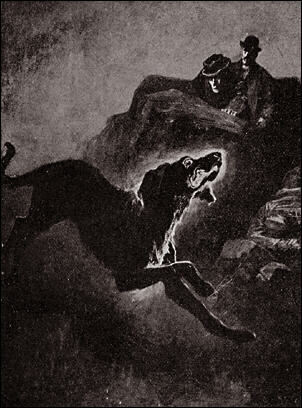
This column is composed of material (Data!) developed for a short course called Appreciating Sherlock Holmes that I teach twice a year in the Community Education Life Enrichment Program for a local community college. It is composed of “points of information” that are common to many / most / all of the 60 Canonical stories.
The information here has been researched by me or borrowed / stolen from many efforts of other Sherlockians.
A CHALLENGE
This month’s story is a major challenge for this column. It is the longest story. It is the best known story. It has been performed in the movies, on TV, and in local theater more than any of the other stories
HERE GOES This month’s story The Hound of the Baskervilles
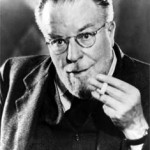 CHRISTOPHER MORLEY SAID . . .
CHRISTOPHER MORLEY SAID . . .
Probably the masterpiece. There are moments of anxiety and shock which no story in this vein has improved. From the moment when Holmes, looking at Mrs. Hudson’s well-polished silver coffeepot, sees the image of Watson studying the “Penang lawyer” (a walking stick) the reader is carried in an absorption we could not spoil by giving any hints. Holmes rarely laughed and when he did it so boded all for evildoers. Toward the end of the superb tale we hear his strident and dangerous mirth.
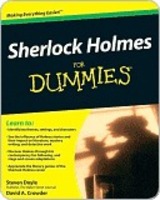 DUMMIES SHORT SUMMARY (From Sherlock Holmes for Dummies by Steven Doyle & David Crowder)
DUMMIES SHORT SUMMARY (From Sherlock Holmes for Dummies by Steven Doyle & David Crowder)
Our longest short story has the longest “short summary” by a long shot.
Like most of Holmes’s tales, this one starts a 221b Baker Street, opening with the account of an early 18th-century legend. Holmes’s visitor, Dr. Mortimer, reads an old parchment telling how “a hound of Hell” has haunted the Baskerville family, who live out on the moors. He goes on to relate how the latest member of the family died under mysterious circumstances.
The novel is clearly in the Gothic tradition, combining elements of mystery, romance, and horror. The tension between the seemingly supernatural evil in the story and Holmes’s science and logic helps make The Hound of the Baskervilles an acknowledged masterpiece. It is one of Arthur Conan Doyle’s greatest works.
The tale is told entirely in the first-person by Watson, who uses narrative, letters, and dairy extracts. Doyle doesn’t employ flashbacks as he does in other Holmes novels.
The Hound of the Baskervilles (1901) was published after Doyle killed his hero at Reichenbach Falls in The Final Problem (1893). The novel is presented as a posthumous Holmes adventure, and when it appeared in The Strand Magazine, it was a sensation.
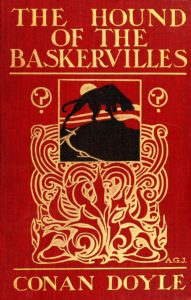 PUBLISHING HISTORY
PUBLISHING HISTORY
• This is the 27th of the 60 stories published
• It was first published in The Strand Magazine in monthly installments from August 1901 through April, 1902
• It was published in book form by Georges Newness Co. in England and McClure, Phillips & Co. in England in the year 1902
• The illustrator was Sidney Paget
HOW MANY WORDS?
According to C. E. Lauderback, 1960 – – found on SHERLOCKIAN.NET website of Chris Redmond, at 59,452 words HOUN has the most words of all the stories (#1 is VEIL – 4,499, #56 if NAVL – 12,701)
THE BEST OF SHERLOCK HOLMES (How do Sherlockians rate this story?)
Very rarely have any of the societies combined both the long and short stories their ratings
1927 – Arthur Conan Doyle did not it on his list of 12 favorites
1959 – The Baker Street Irregulars did not list it on their list of 10 favorites
CLASSIFYING THE CASE (From the Wandering Gipsies of Grimpen Mire of Decatur, Alabama)
This case is one of 23 classified as a MURDER and one of 14 where the perpetrator was either killed, arrested, or otherwise satisfactorily handled. In this tale, the hound did him in.
CHRONOLOGICALLY SPEAKING
Doyle was often very vague about stating WHEN the tale took place and included few contemporary references to help. Whether this was done intentionally or unthinkingly, the dating of events in the Canon is a very popular pastime pursued by several of our “scholars” researching and justifying their results to no end. We will again default to William Baring-Gould’s dating of Tuesday, September 25 to Saturday, October 20, 1888 making it the 20th story in time. This means that Holmes was 34 and Watson 36.
WHAT ELSE HAPPENED IN YEAR – – 1888?
It is always interesting to see what else is happening at the same time as the stories.
• Mashonaland and Matabeleland declared British sphere of influence.
• Convention of Constantinople: Suez Canal declared open to ships of all nations and free from blockade.
• Sarawak and Brunei placed under British protection.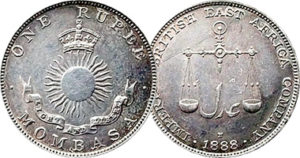
• British East Africa Company founded.
• County Councils formed.
• Jack the Ripper has murder spree in Whitechapel.
• Commission to examine charges against Parnell.
• General Buller founds RASC (Royal Army Service Corps).
• County Councils Act: elects councils to take over administrative duties of JPs.
• Miners Federation of Great Britain formed; demand for minimum wage.
• Foundation of Scottish Labour Party.
• Final report on Commission on Elementary Education Acts in England.
• English Priory of Knights Hospitalers authorized by Royal Charter.
• Foundation of London General Omnibus Company.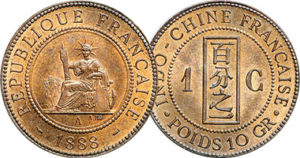
• French Indochina formed.
• Slavery ends in Brazil.
• Emperor Wilhelm I of Germany dies; Frederick III becomes Emperor from March to June, dies, and is succeeded by Wilhelm II.
• Benjamin Harrison elected President of United States; even though Cleveland received more popular votes, the electoral college gives the election to Harrison.
• Unemployment demonstration in Rome suppressed by the military.
• Agricultural depression causes Sweden to abandon free trade.
• More liberal constitution granted to Serbia by Milan.
• Use of Danish language forbidden in schools in German N. Schleswig.
• Reconstructed free port of Hamburg opens.
• New York State establishes electric chair for method of death penalty.
• Boulanger supported by Monarchists in France; popularity threatens Third Republic.
• Main portion of Bremen incorporated into German Customs Union; parts of Wesser estuary remain free port.
• Van Gogh in Arles, Holland, paints Sunflowers, Portriat of Armand Roulin, La Mousme, and Drawbridge at Arles.
• Oscar Wilde publishes The Happy Prince and Other Tales.
• Casey at the Bat is recited publicly for the first time.
• John Phillip Sousa composes the military march Semper Fidelis for the U.S. Marine Corp.
• Tchaikovsky performs Symphony No. 5 in E Minor at St. Petersburg.
• George Moore publishes Confessions of a Young Man.
• Cezanne paints Peasant in a Blue Smock.
• Gilbert and Sullivan debut The Yeomen of the Guard.
• Iannis Psichari, one of the creators of modern Greek literary language, publishes My Journey in demotic Greek.
• Morris publishes Dream of John Bull, on a socialist commonwealth.
• Fontane publishes Irrungen, Wirrungen.
• Monet paints Cap d’Antibes.
• Sir Arthur Quiller-Couch publishes Troy Town, a novel about Corwall.
• Henri de Toulouse-Lautrec paints Trace Horse of the Bus Line, Place Clichy.
• Stevenson publishes The Black Arrow, a novel about the War of the Roses.
• Rimsky-Korsakov composes Scheherazade.
• Charles Doughty publishes travels in Arabia Deserta.
• Seurat paints Fishing Fleet at Port-en-Bessin.
• Thomas Hardy publishes Wessex Tales.
• Kipling publishes Soldiers Three, and Plain Tales from the Hills; short-stories of India.
• Dunlop’s pneumatic tyre developed, principle still unproven.
• Clinton Merriam establishes the National Geographical Society and they release their first magazine.
• Drinking straws are invented.
• George Eastman perfects the “Kodak” box camera, which uses photographic paper roll-film.
• Emile Berliner improves the gramophone.
• Fridtjof Nansen, Norwegian explorer, crosses the Greenland icefield.
• Mercerizing process introduced into cotton manufacture; facilitates later development of the artificial silk industry.
• Nichola Tesla makes first AC motor.
• Incubators are first used for premature infants.
• Institut Pasteur founded.
• Sir J. Dewar and Sir F. Abel invent cordite.
• William Burroughs patents the adding machine.
• Heinrich Hertz produces electromagnetic waves, proves light and heat are both forms of electromagnetic radiation. Sir Oliver Lodge makes same discovery independently. Hertz used an induction coil; Lodge Leyden jars.
HOLMES AND WATSON – PERSONAL INFO
As with most of the stories in the Canon, Sherlock and John were sharing 221b Baker Street.
DRAMATIS PERSONAE
A big cast for a big story
• SIR HUGO BASKERVILLE, former baronet who was a very evil blackguard and set the curse of the hound on his descendants.
• SIR CHARLES BASKERVILLE became fabulously wealthy in the South African Gold fields and returned to England. He was restoring Baskerville Hall to its former grandeur at the time of his death.
• SIR HENRY BASKERVILLE, nephew of Charles by his younger brother (un-named)* who became baronet upon Charles’ death. He was a Canadian farmer before receiving his inheritance.
• DR. JAMES MORTIMER, friend and medical attendant to the late Sir Charles Baskerville.
• ELIZA & JOHN BARRYMORE, man and wife team who were Sir Charles only servants. The Barrymores had been in the service of the Baskervilles for 4 generations.
• PERKINS, groom at Baskerville Hall.
• MR. FRANKLAND, choleric resident of Lafter Hall.
• LAURA LYONS, Frankland’s daughter. Deserted by her husband.
• JACK STAPLETON aka VANDELEUR aka ROGER BASKERVILLE, JR., a naturalist.
• BERYL STAPLETON, nee Garcia, of Costa Rica, beautiful wife of Jack, posing as his sister.
• ROGER BASKERVILLE, SR., youngest brother of Sir Charles. The black sheep of the family, he was the spitting image of Sir Hugo. (“A throwback”) as was his son, Stapleton.
• CARTWRIGHT, an employee of Wilson whom Holmes hired temporarily to bring him food and messages while he was hiding on the moor.
• SELDEN, the Notting Hill murderer.
• JOHN CLAYTON, a cabman.
“QUOTABLE SHERLOCK”
Much to be remembered.
• “The world is full of obvious things which nobody by any chance ever observes.”
• “It may be that you are not yourself luminous, but you are a conductor of light. Some people without possessing genius have a remarkable power of stimulating it.”
• “Now is the dramatic moment of fate, Watson, when you hear a step upon the stair which is walking into your life, and you know not whether for good or ill.”
• “There is nothing more stimulating than a case where everything goes against you.”
• “The devil’s agents may be of flesh and blood, may they not?”
• “The past and the present are within the field of my inquiry, but what a man may do in the future is a hard question to answer.”
• “My eyes have been trained to examine faces and not their trimmings. It is the first quality of a criminal investigator that he should see through a disguise.”
• “I remain an unknown factor in the business, ready to throw in all my weight at a critical moment.”
• “In a modest way I have combated evil, but to take on the Father of Evil himself would, perhaps, be too ambitious task.”
• “It is the scientific use of the imagination, but we always have some material basis on which to start our speculation.”
• “Evil indeed is the man who has not one woman to mourn him.”
• “I presume nothing.”
• “Mr. Holmes, they were the footprints of a gigantic hound!”
• “We balance probabilities and choose the most likely. It is the scientific use of the imagination.”
• “The more outre and grotesque an incident is the more carefully it deserves to be examined, and the very point which appears to complicate a case is, when duly considered and scientifically handled, the one which is most likely to elucidate it.”
• “A devil with merely local powers like a parish vestry would be too inconceivable a thing.”
HOLMES’ FEE
No mention. He was hired by Dr. Mortimer, but the man whose life Holmes saved was Sir Henry Baskerville. Presumably Mortimer hired Holmes on Sir Henry’s behalf, and as a result, Holmes could be paid appropriately.
SHERLOCK ON THE BIG SCREEN & THE LITTLE SCREEN
This is, by far, the most performed of any of the tales. All the name of the story. I have 17 of them in my personal collection.
1922 Eille Norwood in a movie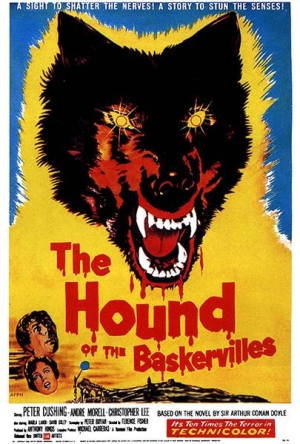
1932 Robert Rendel in a movie
1937 Bruno Gütner in a movie (German)
1939 Basil Rathbone in a movie
1959 Peter Cushing in a movie
1968 Peter Cushing in a 2 episode TV movie
1972 Stewart Granger in a TV movie
1978 Peter Cook in a movie
1981 Vasily Livanov as a TV series episode
1982 Tom Baker as a TV movie multiple episodes
1983 Peter O’Toole in an animated TV movie
1983 Ian Richardson in a TV movie
1988 Jeremy Brett in a TV series episode
1995 Wishbone (dog) in a TV series of famous fiction
1999 Cartoon episode of Sherlock Holmes in the 22nd Century
2000 Matt Frewer in a TV movie
2003 Richard Roxburgh in a TV movie
2005 Anthony D. P. Mann in a DVD release
2012 Benedict Cumberbatch in a TV movie
SHERLOCK HOLMES IN DISGUISE
The Master of disguise used the deception of being disguised 14 times in 11 of the 60 stories, but not in this one.
UNRECORDED CASES (That involved Holmes)
Watson would tease / torture his readers with “I know something you don’t.” Oh my, how Sherlockians love this category. I have in excess of over 150 examples in my collection.
• The Affair of the Vatican Cameos
• The “little case” in which Holmes assisted Wilson and saved his good name, perhaps even his life
• Col. Upwood and the card scandal at the Nonpareil club
• Mme. Montpensier murder case
• Holmes is currently defending one of the most revered names in England from the clutches of a notorious blackmailer
IS THERE A DOCTOR IN THE HOUSE? (THIS IS A BRAND NEW CATEGORY FOR THESE EFFORTS)
Victorian London, in the Holmes’ time, had approximately 1 doctor for every 100 people. 31 of the 60 tales have a doctor in them. This, of course, does not count Holmes’ Boswell. This listing is by Leslie Klinger in the Winter, 2015 edition of the Baker Street Journal. Whether it was Doyle or Watson, a doctor wrote the story.
In this story there was a doctor with a very important role to play.
• Dr. James Mortimer who was the physician to Sir Charles Baskerville
FAINTING IN THE CANON (courtesy of Sherlockian Karen Murdock)
Fainting is extremely common in the Canon, appearing, in some form, in 37 of the 60 tales. In 21 cases someone actually faints. In 22 cases someone almost faints. And in 5 cases someone pretends to faint. In this month’s story Laura Lyons almost faints, but Beryl Stapleton definitely does faint. Sir Henry, of course, does faint.
HOLMES’S PUBLISHED & PROJECTED WORKS
Sherlockians love this topic and are regularly searching for these items. Holmes mentions published or projected works in 11 of the stories:
• Age of Documents – Published
NEWSPAPERS (Real and Fictional)
Though included in only 20 tales some of our more obsessed Sherlockians love this one. No mention of the press by name in this tale.
ANNOTATED SHERLOCK
The 60 Sherlock Holmes stories used English as spoken in England from the 1880’s until the 1910’s. Some words are foreign to us today and need a “contemporary translation.”. For example:
• “a Penang lawyer” A walking stick with a knobbed head, made from the stem of a small palm that grows in Penang, an island in the Straights of Malacca.
• “dispnœa” Labored breathing due to inadequate action of the heart and a consequent want of aeration of the blood.
• “gig” a light one-horse two-wheeled carriage.
• “a farrier” One who shoes horses. A blacksmith.
• “a toff” In old American slang, a dude; one who is stylishly dressed or who has a smart appearance.
• “a wagonette with a pair of cobbs” A four-wheeled carriage, open, or made with a removable cover, furnished with a seat or bench on each side facing inward and with one or two benches in front facing front. The two cobbs are short-legged, strong horses, usually reserved for heavy carriage work.
WEAPONS (from A Compendium of Canonical Weaponry by Dettman and Bedford)
… “a means by which one contends against another” … utilized in 57 of the 60 tales (all but CREE, 3STU, & YELL) There are several general categories to classify “weapons” that include: firearms, human agents, cutlery, animals, blunt instruments, extortion, toxin, blackmail, and miscellaneous. In our story, which is very long, you will find the following: (shortened, just because)
• Service Revolver – Dr. Watson’s and is mentioned in 13 cases. To fire at the Hound.
• Revolver – Sherlock Holmes’ and is mentioned in 8 cases. To kill Baskerville’s hound, firing 5 times into the creature’s flank.
• Rifles – Of the two warders pasted at the railway station at Fernworthy, on the lookout for the escaped murdered Seldon.
• Rifle – Of a mounted convict-guard, who was seen on the moor by Sir Henry Baskerville and friends on their way to Baskerville Hall.
• Revolver – Of Inspector Lestrade, which he said he always carried with him in his hip pocket whenever he wore his pants, which was hopefully most of the time, at least while on duty.
• Pistol – Which a burglar, presumable Stapleton, used to kill a page who had surprised him during a robbery.
• Hunting Crop – Which Sir Henry Baskerville armed himself with when he and Watson embarked on a search for Selden, the Notting Hill Murdered, who was loose upon the moor.
• Rock – Which Selden hurled at Watson and Baskerville when they discovered his hiding place.
• Hands – Especially nails, of Stapleton, which he used to punish his wife.
• Pack of Hounds – Kept by Sir Hugo Baskerville which he set on the track of the unfortunate maiden who was fleeing from his clutches.
• Hound – Of the Baskervilles, from the legend of the same name, which was sent by the infernal Powers to claim the soul of the debouched Sir Hugo, after he had surrendered his soul to them in payment for being allowed to capture the above-mentioned maiden.
• Hound-Mastiff – Kept by Stapleton, which with the help of a cunning preparation of phosphorous, made an altogether convincing double of the original hound. It had successfully killed off Sir Charles Baskerville, chased the criminal Selden to his death by mistake, and nearly accomplished the murder of Sir Henry Baskerville, despite Holmes’ precautions.
 Frank Mentzel, aka Merridew of Abominable Memory, is the current Gasogene of the Six Napoleons of Baltimore and is busy getting ready for that group’s 70th anniversary this September and for his four week Appreciating Sherlock Holmes classes for the Community Colleges of Baltimore County, MD for the Fall semester this October.
Frank Mentzel, aka Merridew of Abominable Memory, is the current Gasogene of the Six Napoleons of Baltimore and is busy getting ready for that group’s 70th anniversary this September and for his four week Appreciating Sherlock Holmes classes for the Community Colleges of Baltimore County, MD for the Fall semester this October.

Sorry, comments are closed for this post.